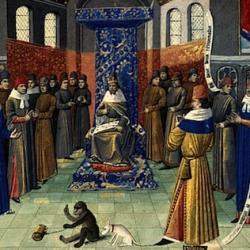News reports of the recent revelations about the sex scandals in the Catholic church still claim that the crisis is about “pedophilia.” It’s not, as Philip Jenkins pointed out more than twenty years ago (Pedophiles and Priests).
The alliterative “pedophile priests” is rhetorically punchy but, Jenkins argued, misleading: “Both the words in question are open to controversy because they place a special construction upon the behavior: taken as a whole, the term makes the problem more serious, more dangerous, and more Catholic than it would otherwise appear. To speak of ‘priests’ severely limits the phenomenon of abuse by clergy because the word is commonly understood to refer to Catholic priests, as opposed to the pastors or preachers of other denominations (though priests conceivably also implies Episcopal or Orthodox ministers)” (7).
Pedophile is also misleading: “A pedophile is a man sexually attracted to children below the age of puberty, but the vast majority of recorded instances of clergy ‘abuse’ or misconduct involve an interest in teenagers of either gender, often boys of fifteen or sixteen. The difference may seem trivial, but most psychological opinion holds that pedophiles are far more difficult to treat or control than offenders who direct their attention to older targets. Nor is it possible to speak of a younger child’s giving genuine consent to a sexual act, so that the conduct necessarily implies the use of force or grave deception. To speak of a ‘pedophile priest’ implies that the victims are younger and more defenseless than they commonly are and that the offenders are severely compulsive and virtually incurable. The very term most commonly used to describe this problem has powerful rhetorical connotations in its own right, even before a given writer or journalist has begun to select and describe cases to illustrate the phenomenon” (7).
Rather than pedophilia, most cases exhibit “pederasty” or “ephebophilia,” “the consensual preference for boys . . . upon puberty” (79). The “cases often suggest sexual liaisons between priests and boys or young men in their late teens or early twenties” (78). Jenkins adds, “The case that ruined Bruce Ritter involved a man of twenty-five who generally passed for nineteen. Other incidents were said to affect somewhat younger boys, but even if all the allegations against him were true, he would not count as a pedophile” (79).
The distinction isn’t meant to excuse. But getting the details straight does clarify what the moral issue actually is: “Suggesting that the church concealed or tolerated pedophiles is much more destructive than the charge that it granted a certain degree of tolerance to priests involved in consensual relationships with older boys or young men. In Catholic church law, the age of heterosexual consent is sixteen rather than the eighteen common to most American jurisdictions” (79).
Surprisingly, Jenkins argues that “the hostile imagery in the mainstream media from the mid-1980s onward resulted from the precedents set by Catholic newspapers and Catholic commentators, who excoriated the policies of the church hierarchy. It was the Catholic press, above all the liberal National Catholic Reporter (NCR), that broke ground for other media outlets in drawing attention to clergy sex scandals, in presenting the cases as part of a systemic problem, and by stressing the institutional context of the offenses. As early as 1985, it was NCR that pioneered the term ‘pedophile priests'” (15).
All this justifies Bishop Robert Morlino’s forceful recent statement about the crisis: “until recently the problems of the Church have been painted purely as problems of pedophilia — this despite clear evidence to the contrary. It is time to be honest that the problems are both and they are more. To fall into the trap of parsing problems according to what society might find acceptable or unacceptable is ignoring the fact that the Church has never held ANY of it to be acceptable — neither the abuse of children, nor any use of one’s sexuality outside of the marital relationship, nor the sin of sodomy, nor the entering of clerics into intimate sexual relationships at all, nor the abuse and coercion by those with authority. . . It is time to admit that there is a homosexual subculture within the hierarchy of the Catholic Church that is wreaking great devastation in the vineyard of the Lord. The Church’s teaching is clear that the homosexual inclination is not in itself sinful, but it is intrinsically disordered in a way that renders any man stably afflicted by it unfit to be a priest. And the decision to act upon this disordered inclination is a sin so grave that it cries out to heaven for vengeance, especially when it involves preying upon the young or the vulnerable. Such wickedness should be hated with a perfect hatred. Christian charity itself demands that we should hate wickedness just as we love goodness.”












